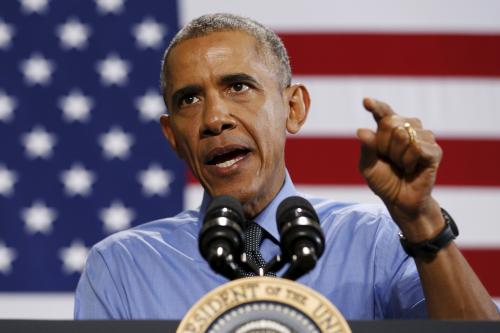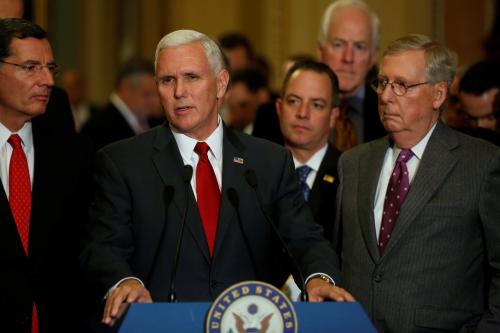House Republicans’ erratic approach to “repeal and replace” has turned the routinely overlooked world of congressional procedure into breaking news. While much ink has been spilled over the reconciliation process, its prerequisite, the budget resolution, gets little attention outside of its reconciliation-enabling features. In a new paper, Brookings Fellow Molly Reynolds explores budget resolution consideration in the Senate, explaining how a particular blend of procedural constraints and political incentives have turned this theoretically helpful step into a microcosm of congressional disarray.
The budget resolution, as conceived in the 1974 budget act, offers Congress an opportunity to sketch out some budget basics, making sure the appropriations, authorizing, and revenue committees aren’t starting from scratch. Though the 1974 act contained several provisions controlling floor consideration of the budget resolution in the Senate, such as germaneness and limitation on debate, Reynolds notes that the overall structure of the process “suggests that the act’s drafters meant for the process to be deliberative.”
As is often the case, senators quickly found ways to leverage the openness of this process to advance personal goals. The number of amendments to the budget resolution increased through the 1980s, eventually coming to a head in 1993 with the first vote-a-rama. A tricky distinction between “debate,” which is capped at 50 hours for a budget resolution, and “consideration,” which has no limit, enables these marathon legislative sessions. Amendments proceed through rapid-fire debate (30 seconds to each side) and a ten-minute vote, frequently taking 11+ hours and going into the early morning. Unsurprisingly, this series of late night, low-information votes tends to make deliberation rather acrimonious. But while deliberating over a budget resolution has become “a task about which senators complain heartily . . .” it’s clear that “they rely on the budget resolution as a vehicle for achieving various personal and partisan political goals.” In an effort to better understand these competing interests, Reynolds investigates symbolic amendments to the budget resolution.
Symbolic amendments—Sense of the Senate and deficit neutral reserve fund amendments—generally offer one of two benefits: an opportunity to champion a personal policy preference or to force opposing party senators to cast controversial votes. Reynolds finds that symbolic amendments constituted an increasingly large portion of all amendments in the early vote-a-rama years until a procedural change in 2000 limited certain symbolic amendment types. Following this drop, the rate has grown steadily with increased use of alternative symbolic amendments and has returned to pre-2000 reform heights in recent years.

But the aggregate filing rate isn’t the whole story. Reynolds investigates historical changes in proposed symbolic amendment rates, and the all-important group of amendments that actually receive a vote. Drilling into majority-minority distinctions and committee membership, Reynolds finds evidence for minority frustration at the lack of amendment opportunities. And it’s clear the budget resolution may be suffering most acutely: “While the budget resolution cannot be walled off from the rest of the legislative process, it also may not be able to bear the burden of functioning as the Senate floor’s only steam valve.” Reynolds offers some recommendations that, while not panaceas, could do a great deal to relieve some of this pressure and bring the congressional budget process back into the realm of the reasonable (or at least the recognizable).






Commentary
Symbolic amendments and the politics of budget resolutions
May 12, 2017